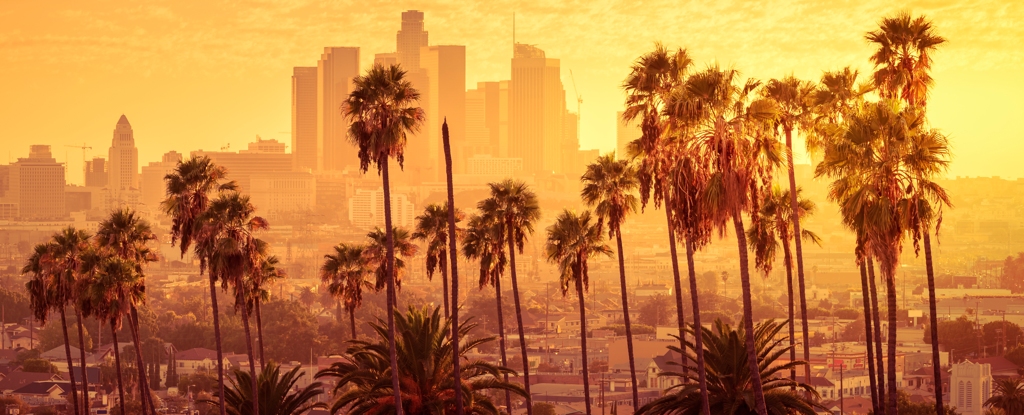Vehicle emissions in California have fallen steadily for years as environmental policies and technological advances have cleaned up traffic exhaust.
But since 2010, airborne particulate matter and ground-level ozone have struggled to decline due to an increase in “secondary sources,” many of which are trees and shrubs that line city streets.
To map the emissions, a team of US researchers flew nine flights over Los Angeles in June 2021 to directly measure fluctuating concentrations of particulate matter emitted by plants and volatile organic compounds (VOCs), precursors to ozone pollution.
While previous maps have estimated emissions based on known sources or modeled the movement of emissions, this latest aircraft approach can directly measure pollutants in the air multiple times per second, using an on-board mass spectrometer that describes the distribution of more than 400 types of emissions in unprecedented detail.
The team combined their results with temperature patterns down to a resolution of 4 kilometers by 4 kilometers (about 2.5 miles by 2.5 miles) and determined that plant-derived VOCs, including compounds such as isoprene, monoterpenes, and sesquiterpenes, contribute about 60% of the potential generation of secondary organic aerosol during the early summer in Los Angeles.
The problem is likely to worsen as summer continues, as emissions from plants are increased by hot weather and drought, and researchers predict that we will have to continue to deal with the issue as global warming progresses.
Despite efforts to reduce toxic emissions from transportation and industry, air pollution remains a major health problem around the world. Tiny solid particles just a few micrometres in size increase the risk of heart disease and low birth weight, and ozone in the air we breathe is associated with increased respiratory disease and mortality.
Key to the formation of these potentially toxic substances are VOCs, a diverse range of chemicals that not only directly affect our health but also react in sunlight and the atmosphere to form particulates and gases such as ozone.
With an estimated 4.2 million premature deaths a year due to air pollution, most of them urban residents, health officials are eager to find better ways to identify sources of VOCs that can be abated in big cities.
The potential sources of these widespread compounds are endless—everything from pesticides to hair care products to car interiors to cleaning products releases compounds that can produce harmful substances even in minute quantities—so it’s not surprising that volatile chemicals account for nearly half of fossil-fuel-derived VOC emissions in industrial cities.
Surprisingly, the green spaces that define clean living themselves produce their own compounds in the form of terpenoids, which analysis revealed accounted for about 16 percent of the mass flow of VOCs measured.
The importance of biogenic versus industrial sources has been hotly debated, especially in light of rising temperatures.
“While monoterpene and sesquiterpene emissions typically increase exponentially with temperature, isoprene emissions are known to increase with temperature and light, eventually decreasing above a temperature threshold,” the researchers note in their study.
Knowing that urban gardens may contribute to pollution is no reason to reduce green space, which itself lowers temperatures and improves our health in other ways. Some can even filter out certain types of VOCs from the air.
But to maximize the effect, it would be useful to better understand how factors such as drought increase large-scale biogenic VOC emissions, and how discarded flowers of plants such as the jacaranda, Los Angeles’ most abundant plant (though not a native), provide their own organic precursors. Or, it would be useful to determine which types of plants are low emitters as global warming becomes inevitable.
The research was published in the journal Science.

